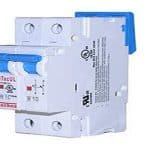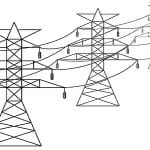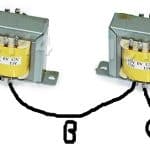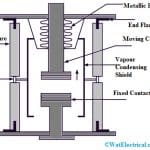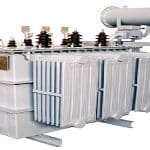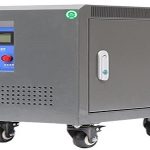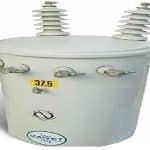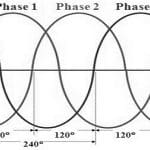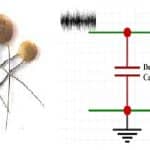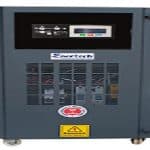The first compact commercial circuit breaker was launched by Stotz in 1923 which combines both the thermal & magnetic protection functions. After that, his team developed a circuit breaker device to replace a fuse. This device has a component, once it is heated it will enable a disconnecting device and once it is cooled, then it is turned on again. There are many companies that have been developing circuit breakers continually which range from … [Read more...]
Transmission Lines : Parameters, Types, Efficiency & Characteristic Impedance
The first transmission line was demonstrated over an extended distance by physicist Stephen Gray on July 14, 1729, to show that one can transfer electricity through that method. This demonstration is used damp hemp cords which are balanced through silk threads. In 1882, electric power transmission was accomplished by the first high-voltage transmission between Munich & Miesbach. After that in 1891, the first three-phase AC overhead line construction … [Read more...]
Series Transformer : Wiring Diagram & Its Affects
Transformers are typically used to step down or step up voltage levels in AC circuits, and they operate based on electromagnetic induction. When transformers are connected in series, each transformer's primary winding is connected in series with the previous transformer's secondary winding. The secondary winding of the first transformer is connected to the load, and the primary winding of the last transformer is connected to the power source. In electrical … [Read more...]
Vacuum Circuit Breaker : Diagram, Properties, Construction, Working & Its Applications
A circuit breaker is one type of electrical switching device used to control & also protect the power system, either automatically or manually from any harm occurred by short circuits or overload. The main function of the circuit breaker is to obstruct the flow of current once the protective relays notice a fault like electrical fires, shocks, and the electrocution risk. These are classified into different types based on different factors, location of … [Read more...]
Power Transformer : Construction, Working, Differences, Selection, Failures & Its Applications
A transformer is normally an electrical device used for increasing or decreasing the voltage supply without changing the frequency of AC between two circuits. Similarly, a transformer that functions with high voltages & currents within the power system network is known as a power transformer. This transformer is used to change bulk electrical energy from one frequency to another. Power transformers are very important devices to transmit, distribute, … [Read more...]
Isolation Transformer : Construction, Working Principle, Types, Advantages & Its Applications
In power systems, transformers are electrical machines used for transferring one form of energy to another form without modifying frequency by stepping up/down the main voltage. Similarly, a transformer that is used to isolate circuits is known as an isolation transformer. The primary voltage value in this transformer will be equivalent to the secondary voltage but the windings in this transformer will have an equal number of turns to balance for losses. … [Read more...]
Single Phase Transformer : Construction, Working, Wiring, Problems & Its Applications
A transformer is a stationary electrical machine mainly used to change electrical power from one circuit to another without varying the frequency. Transformers mainly increase or decrease the voltage with an equivalent increase or decrease within the current. The transformer works on the principle of mutual induction occurrence between two transformer windings connected through the common magnetic flux. Transformers are classified into different types … [Read more...]
Three Phase System : Connections, Advantages & Its Applications
In an electrical circuit, there are two kinds of systems available; 1-phase (single phase) & 3-phase (three phase). In a 1-phase circuit, the flow of current will be only a single wire and also a neutral line to complete the electrical circuit thus, the least amount of power can be transmitted within a single phase. Here the generating station and load station will also be single phase. In the year 1882, a new development was done on the polyphase … [Read more...]
Decoupling Capacitor : Circuit, Working, Differences, how to choose & Its Applications
For analog & digital devices, system noise has become a major problem so they have become very sensitive to disturbances from signal lines & power. So the capacitors like decoupling and bypass within a circuit are used very close to the IC power pins to provide high transient current to an integrated circuit & decrease power ripples. Analog circuits like audio amplifiers produce a cracking noise or hum throughout their operation whereas digital … [Read more...]
Three Phase Inverter : Circuit, Working, Types & Its Applications
An inverter is an electrical device mainly used to change current from DC to AC form. It is also known as a variable frequency drive (VFD) or AC Drive. The inverter is normally used in variable-frequency drive & high-power applications like HVDC power transmission and also these are responsible for controlling an electric motor’s torque & speed. These are categorized into two types depending on the source of power supply within the power circuit … [Read more...]
